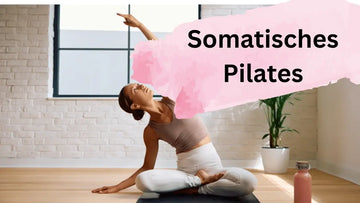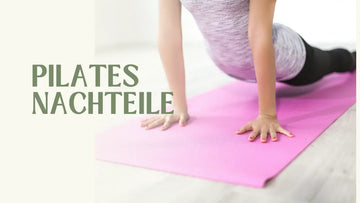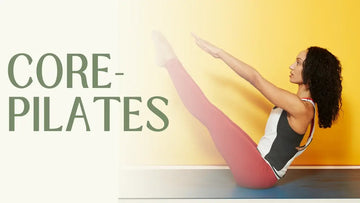In this article, we analyze in detail the two popular methods - yoga and Pilates - and examine which approaches can help improve back health. Using sound information and practical recommendations, we show how both disciplines can help relieve back pain and lead to better posture and stability in the long term.
1. Introduction to the topic
Back pain is one of the most common complaints in everyday life. Factors such as lack of exercise, poor posture and stress play a significant role. We will look at how yoga and Pilates each take different approaches to strengthening the back muscles, relieving tension and increasing mobility. The aim is to provide a well-founded decision-making aid by highlighting the specific advantages of both methods.
2. Basics of Yoga and Pilates
2.1 The Principles of Yoga
Yoga is a practice that is thousands of years old and aims to bring body, mind and soul into harmony. With a focus on breathing exercises, meditation and physical asanas (postures), not only flexibility and balance are improved, but body awareness is also strengthened. In the context of back health, yoga helps to relieve tension and support the spine in its natural alignment. We integrate targeted stretching and strengthening exercises that lead to lasting relief of the back area.
2.2 The methodology of Pilates
Pilates was developed in the 20th century and focuses primarily on strengthening the core muscles. Controlled, precise movements activate the deep abdominal and back muscles, leading to improved stability and posture. The exercises are designed to integrate the entire musculoskeletal system while specifically targeting the areas that can contribute to back pain. A central aspect of Pilates is promoting body awareness, which contributes to more conscious and healthier movement execution.
3. Back pain: causes and challenges
Back pain is often caused by muscular imbalances, poor posture and excessive strain in everyday life. A weak core, shortened muscles and a lack of mobility can be the cause of chronic complaints. Both yoga and Pilates offer approaches to balance muscular imbalances, increase flexibility and improve body awareness. Below we will explain how these methods individually address the different causes of back pain.
4. Effect of yoga on the back
4.1 Improving flexibility and relaxation
Yoga places great emphasis on stretching and flexibility. Flowing movements and targeted asanas gently stretch the muscles, which can relieve tension in the back. Exercises such as the downward dog, the cobra or the bridge not only promote the mobility of the spine, but also have a relaxing effect on the entire body. This can lead to a reduction in stress and the associated muscular tension.
4.2 Improving body awareness and posture
Another important aspect of yoga is training body awareness. Through conscious breathing and meditative elements, we learn to recognize and correct poor posture early on. This is particularly beneficial for people with chronic back pain, as it has a lasting effect on the causes of the pain. Improved posture relieves the spine and reduces the risk of future back problems.
4.3 Integration of breathing techniques
The breathing techniques integrated into the yoga sessions play a key role in reducing stress and relaxing the muscles. Deep, conscious breathing promotes the oxygen supply to the cells and thus supports the regeneration of the muscles. This can lead to faster relief from pain and improved mobility.
5. Effect of Pilates on the back
5.1 Strengthening the core muscles
The core of Pilates is the intensive strengthening of the core muscles. A stable core forms the basis for a healthy spine. Muscular imbalances can be balanced through targeted exercises that target the deep abdomen, back and pelvic floor. This leads to a sustained improvement in posture and significantly reduces the risk of back pain.
5.2 Improving body control and stability
Pilates places great emphasis on precise movement sequences. Controlled exercises not only strengthen the muscles, but also improve coordination and balance. Increased body control makes it possible to avoid poor posture and optimally support the spine. This makes a decisive contribution to evenly distributing loads and avoiding signs of overload.
5.3 Prevention and rehabilitation
Pilates is ideal both as a preventative measure and for rehabilitation in the case of existing back problems. The ability to adapt exercises to the individual means we can specifically address the current training status and any complaints. The gentle progression of the exercises supports the rebuilding of muscle strength and mobility without placing unnecessary strain on the back.
6. Comparison: Yoga vs. Pilates in detail
6.1 Similarities and synergies
Both disciplines aim to promote back health. Both yoga and Pilates focus on improving body awareness and strengthening muscles. Both methods include breathing techniques that contribute to relaxation and regeneration. A combination of both approaches can produce synergistic effects that go far beyond the individual benefits.
6.2 Differences in methodology
Yoga:
- Focus on flowing movements and meditative elements
- Emphasis on stretching, flexibility and stress reduction
-
Traditional asanas that involve the whole body
Pilates:
- Targeted strengthening of the core muscles
- Precise, controlled movements to improve stability
- Individually adaptable exercises for rehabilitation and prevention
6.3 Areas of application and target groups
While yoga is often valued as a holistic approach to relaxation and increasing flexibility, Pilates is particularly aimed at people who are looking to specifically strengthen their deep muscles. We recommend choosing the method that best suits your personal needs, depending on your individual complaints and training goals.
7. Practical recommendations for the back
7.1 Suitable yoga exercises for the back
Cobra (Bhujangasana)
Promotes backbends and strengthens the spine. Stretching the chest and abdominal muscles improves posture.


Cat-Cow (Marjaryasana-Bitilasana)
This sequence mobilizes the spine and releases tension in the back area.
Child's Pose (Balasana)
Provides gentle relief for the back and promotes relaxation.

7.2 Effective Pilates exercises for core stabilization
The Hundred
A classic exercise that strengthens the entire core and promotes blood circulation.


Roll Up
Promotes spinal mobility and strengthens abdominal muscles, resulting in better back support.
Swimming
This exercise strengthens the back extensors and improves the stability of the spine.

7.3 Integrated training programs
We recommend a hybrid training program that includes elements of both yoga and Pilates. By combining both methods, we can benefit from the advantages of increasing flexibility and targeted core strengthening. Such a program can be individually adapted to the needs of people with different back pain profiles.
8. Safety and individual adaptation
8.1 Consideration of personal requirements
Before starting a new training program, we should always consider your individual health requirements. People with acute back pain or specific spinal problems should seek medical advice beforehand. Professional guidance from qualified trainers is essential in these cases.
8.2 Progression and load control
Both yoga and Pilates offer the opportunity to increase exercises gradually. We recommend starting with simple exercises and gradually increasing the intensity. Continuously checking your posture and technique is essential to avoid overloading and to ensure long-term success in your training.
8.3 Integration of modern tools
Modern training equipment and aids, such as yoga blocks, Pilates rings or special mats, can help you perform exercises more correctly and increase the effectiveness of your training. We recommend integrating these aids into your training routine to maximize both safety and the training effect.
9. Scientific findings and experience
9.1 Studies on yoga and back health
Numerous studies show that regular yoga can contribute to a significant reduction in back pain. By promoting flexibility and improving posture, chronic complaints are often alleviated. We rely on scientific findings that show that the combination of breathing exercises and stretching leads to better blood circulation and relaxation of the muscles.
9.2 Evidence-based benefits of Pilates
There are also numerous studies in the area of Pilates that show a positive effect on back stability. Targeted exercises that specifically target the deep core muscles can significantly reduce the strain on the spine. We have found that the precise execution of the movements not only leads to increased muscle strength, but also to improved body awareness, which prevents back problems in the long term.
9.3 Integration of both approaches into training practice
In practice, it turns out that a combination of both disciplines often achieves the best results. While yoga primarily promotes flexibility and relaxation, Pilates contributes significantly to the stability and strengthening of the core muscles. This synergy can help to balance muscular imbalances and relieve the strain on the back in a holistic manner.
10. Recommendations for practice
10.1 Individual training plans
We recommend creating individual training plans that include elements of both yoga and Pilates. A detailed medical history and, if necessary, professional advice should be the starting point of every training routine. This is the only way we can ensure that the exercises are optimally tailored to your personal needs.
10.2 Regularity and continuity
Success in training does not happen overnight. We emphasize how important regular and continuous practice is to achieve long-term success. Even a few sessions per week can, if carried out consistently, lead to a significant improvement in back health.
10.3 Professional guidance
Qualified instruction from experienced trainers is essential. Especially for people who already suffer from back problems, professional advice and corrections to the technique can make the difference between success and further problems. We recommend that you regularly take part in guided courses or receive support as part of a rehabilitation program.
11. Conclusion: Which approach is the right one?
Our comprehensive analysis shows that neither yoga nor Pilates can be generally described as “better” for the back – rather, the choice depends on individual needs and goals.
-
Yoga is excellent for promoting flexibility, relaxation and body awareness. It is particularly recommended for those who value mental balance and stress reduction in addition to physical strengthening.
-
Pilates impresses with its targeted focus on core stability and the precise strengthening of the deep muscles. It is ideal for people who already have back problems or who want to prevent them by sustainably strengthening their core.
We believe that combining both methods in a balanced training program will produce the best results. A holistic approach that includes both stretching and strengthening not only promotes back health, but also contributes to better general well-being.
Our approach is based on scientific findings and practical experience. In our article, we have presented practical recommendations, well-founded comparisons and a clearly structured training plan that can help both beginners and advanced exercisers to sustainably improve their back health.



















